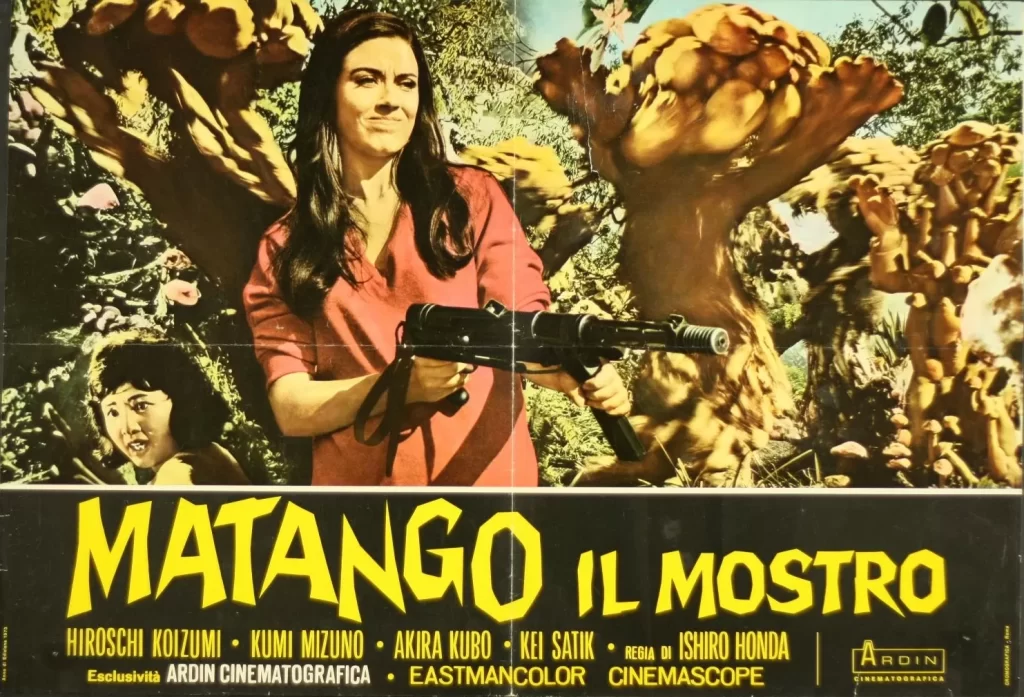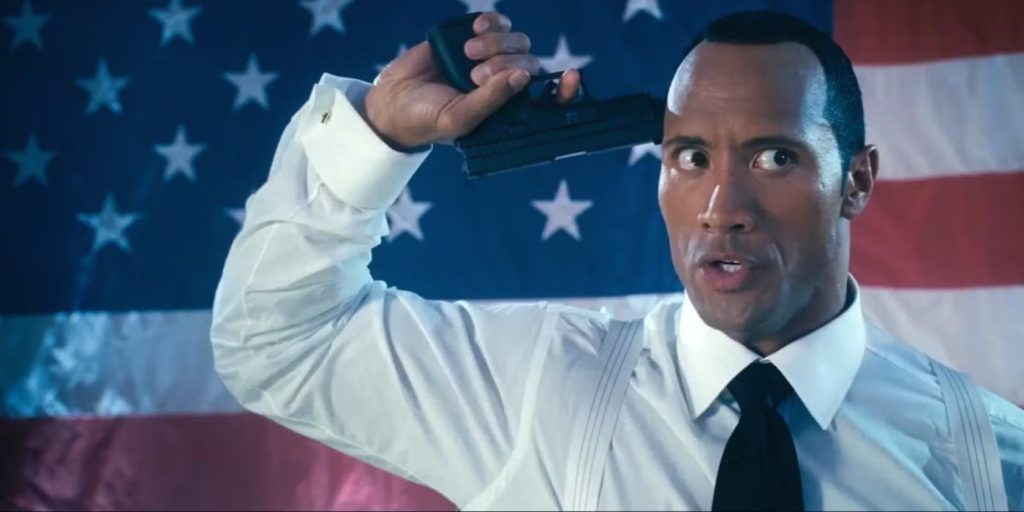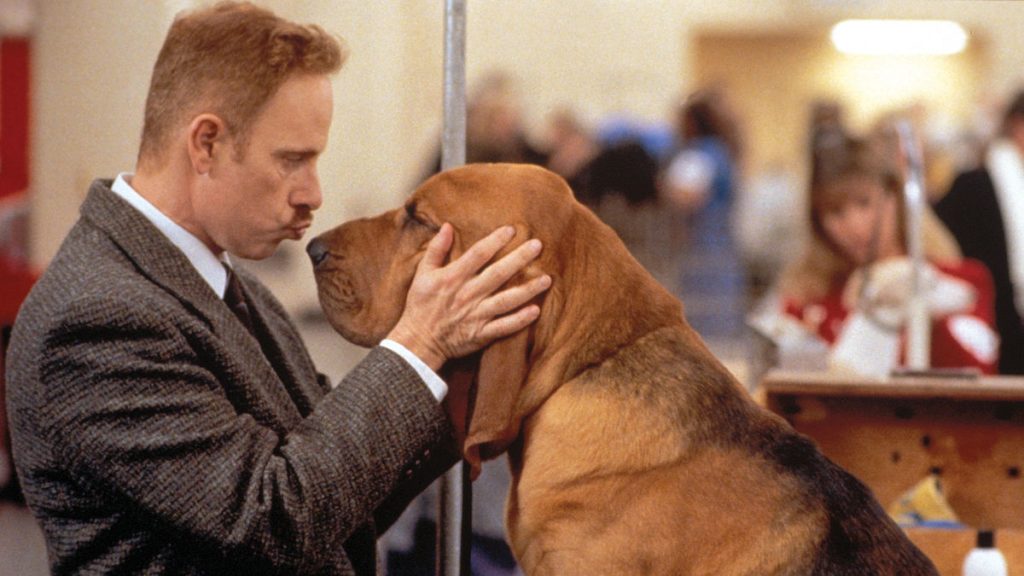1999 is considered one of the strongest years of cinema in living memory. There will no doubt be countless articles in 2019 marking the 20th anniversaries of that year’s greatest hits and examining their impact and legacy.
But this column isn’t about those movies. This column is about the overlooked gems from 1999 — the weird, ungainly, or unjustly forgotten films that don’t usually get listed alongside the established classics, but which are just as deserving of their own retrospectives.
8mm
When it comes to overlooked and underrated films from 1999, 8mm is probably not what springs to mind. A highly stylized thriller centered around pornography and S&M, it plays like Cruising for the Hot Topic crowd, and ultimately is neither well made enough to demand critical reappraisal, nor prurient enough to inspire cult rediscovery. Despite turning a profit and spawning a direct-to-video sequel, the film failed to catch on with critics or audiences, and any reputation it has is likely owed to its prevalence on cable television.
Yet, viewed today, the movie serves as a fascinating reflection of subconscious middle-class anxieties at the turn of the millennium, while also anticipating a number of massive cultural shifts waiting just around the bend.
Written by Andrew Kevin Walker (of Seven fame), and directed by Joel Schumacher (fresh from his burial of WB’s Batman franchise), 8mm traces the descent of ambitious private detective Tom Welles (Nicolas Cage) into the pornographic underworld. Hired to ascertain the authenticity of a snuff film discovered by the conscience-stricken widow of a recently deceased industrialist, Welles’s investigation uncovers a deadly conspiracy and brings him face-to-face with his own repressed desires and penchant for brutality.
Despite the simple hook of its premise (which makes for a solidly engaging first act), 8mm is too slickly manufactured to makes good on its potential. Schumacher shoots the whole thing like a flashy music video (replete with a painfully dated nu metal score), while the script (which Walker disavowed upon the film’s release) utterly fails in its examination of a “good” man’s moral disintegration, tacking on a number of cop-outs that let both its hero and its audience off the hook in the end.
Still, the film is not wholly without merit. While Cage is miscast as the lead (he’s the last person who should play an everyman) and Catherine Keener is utterly wasted in a rote long-suffering wife role, the rest of the supporting cast does good work. As the sadly doomed Max California, Joaquin Phoenix makes for a plucky, sympathetic sidekick (even when he’s tasked with delivering howlers like “You dance with the devil, the devil don’t change, the devil changes you.”), while Peter Stormare and Chris Bauer (as the wonderfully-named Dino Velvet and Machine) make the best of what their given.
 The main standout among the cast is James Gandolfini, who had just attained leading man status thanks to the debut of The Sopranos on HBO one-month prior to 8mm’s release. As sleaze-bag casting agent Eddie Poole, Gandolfini takes what could have been a stock supporting character and turns him into an achingly pathetic, but bracingly real person. His final scene is the standout of the film, and even knowing what he would go on to do in the decade that followed, his turn here still manages to catch the viewer off guard. Six years after his death, it serves as a sad reminder that we lost probably the best American actor of his generation.
The main standout among the cast is James Gandolfini, who had just attained leading man status thanks to the debut of The Sopranos on HBO one-month prior to 8mm’s release. As sleaze-bag casting agent Eddie Poole, Gandolfini takes what could have been a stock supporting character and turns him into an achingly pathetic, but bracingly real person. His final scene is the standout of the film, and even knowing what he would go on to do in the decade that followed, his turn here still manages to catch the viewer off guard. Six years after his death, it serves as a sad reminder that we lost probably the best American actor of his generation.
Beyond Gandolfini’s performance, the main thing that makes 8mm worthy of a rewatch is its depiction of pornography’s influence on the male psyche. By taking up the point-of-view of its troubled protagonist as he enters a marketplace in which almost every desire is made conveniently available, it anticipates and reflects the sudden intrusion of the commercial sex trade into the American home.
This isn’t to say that the film’s depiction of pornography and the flesh trade are convincing in-and-of themselves (at one point, Welles surveys a smut swap meet and passes by a booth marked, simply,”KIDS”), nor that their real-life influence is anywhere near as destructive as presented here. But the new accessibility to pornography and sexual services via technology (from internet porn to hook-up apps on our smartphones) undeniably altered our relationships to one another, as well as our notions of ourselves and our inmost desires, in ways that we, as a society, clearly weren’t any better prepared for than Cage’s buttoned-up private dick.
8mm wasn’t the only movie of 1999 to tap into this undercurrent of collective anxiety. Stanley Kubrick’s swan song from the same year, Eyes Wide Shut, makes for an interesting companion piece. Like 8mm, Kubrick’s film follows an upper-middle-class husband and father down a sexual rabbit hole, one that deposits him in the middle of a deadly conspiracy. There, he discovers a horrible truth: the upper classes to which he so desperately yearns to belong are sustained through the homicidal sacrifice of vulnerable young women (it’s no coincidence that in both films, the heroes are fathers to small daughters). This discovery both entices and repels him, and, in the end, he must confess the transgressions he’s committed during his odyssey before he can return home to his family.
Eyes Wide Shut is the far superior film on every level (so too, for that matter, is Schumacher’s 1993 masterpiece Falling Down, also about a man’s violent odyssey back to his family, although its exploration of masculinity-in-crisis is tied to race and class rather than sex), but 8mm displays a greater level of foresight (if not insight), thanks to the way that it apprehends another strain of pornography that will soon be made readily available to anyone with an internet connection: the pornography of violence, vis-a-vis the snuff film.
8mm was hardly the only movie to center its plot around snuff. The psychosexual British horror masterpiece Peeping Tom (1960) dealt with the subject before the term even existed, while 1976 saw the release of movie titled, simply, Snuff. Since then, there have been any number of films that featured or dealt with the subject, including Hardcore (1979), Videodrome (1983), Henry Portrait of a Serial Killer (1986), Lost Highway (1997) and A Serbian Film (2010). Several movies, such as those belonging to the Faces of Death and Guinea Pig series — to which 8mm paid homage — even attempted to make audiences question to the reality of their extreme content.
But coming as it did at the turn of the century, its impossible not credit 8mm with a greater level of prescience than most of those, given how technology would soon make snuff films a part of reality. Terrorist beheading videos, live-streamed killing sprees, suicides staged for vlogs—in the digital age, snuff films are no longer the stuff of urban legend. They are a gruesome facet of everyday reality, often politically motivated but always operating under the same motives, and conveying the same effect, as their formerly mythical counterparts.
8mm doesn’t deserve to be remembered as a great, or even particularly good film. But it does deserve to be remembered as a work of art attuned to the unconscious apprehension of its original audience, as well as a hyperstitionally unnerving portent of things to come. ![]()



